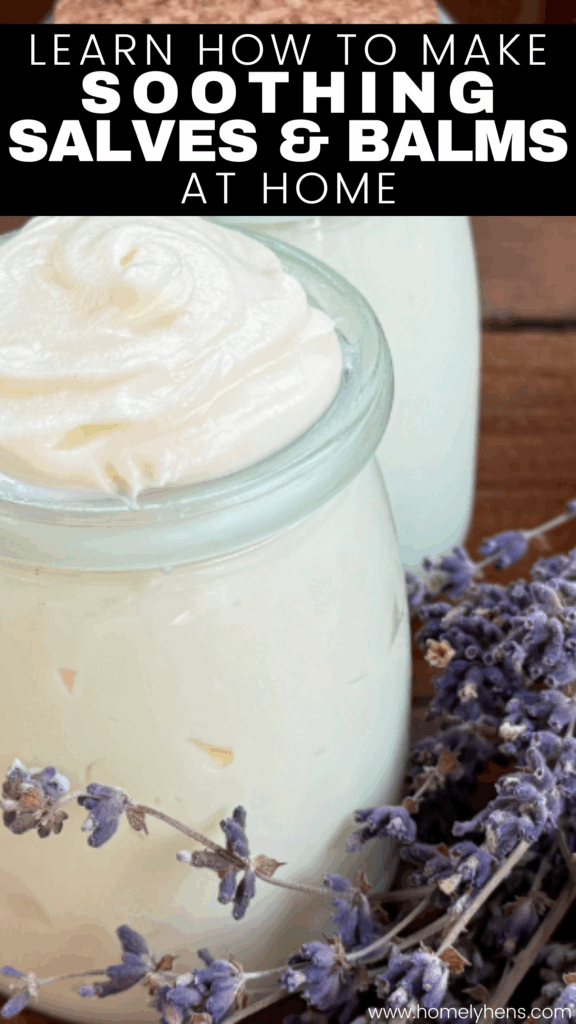How to Make Soothing Herbal Salves and Healing Balms at Home
Crafting your own herbal salves and healing balms at home is one of the most rewarding ways to bring natural living into your daily routine. With just a few simple ingredients – like infused oils, beeswax, and healing herbs – you can create remedies that soothe dry skin, ease muscle tension, and support your family’s wellness the old-fashioned way.
Whether you’re just getting started or looking to perfect your technique, this guide will walk you through everything you need to confidently make salves that work.
This simple, empowering skill fits beautifully into a lifestyle focused on (natural remedies, clean ingredients, and self-reliance) – all key elements of Natural Living.
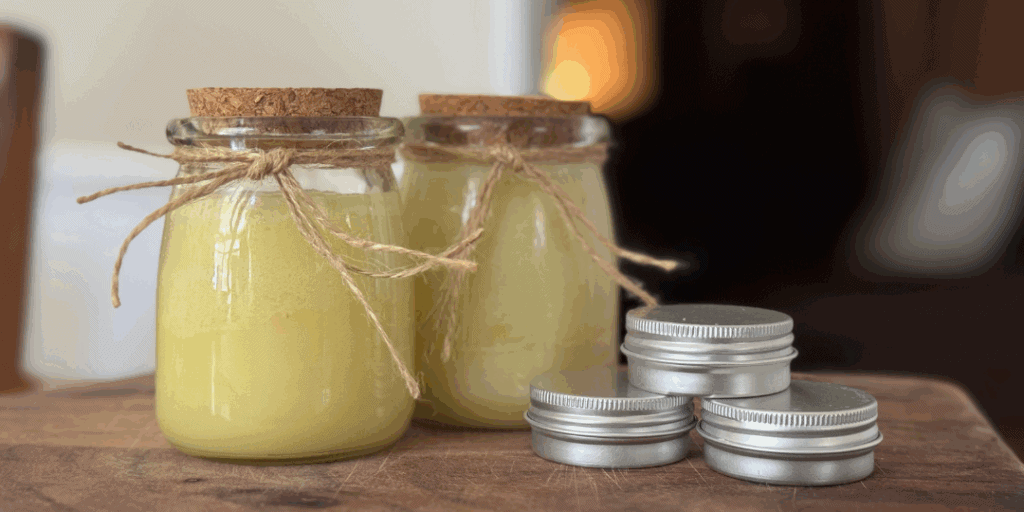
This post contains affiliate links. This will not cost you anything, but it helps us to offset the cost of running the blog. We only share products we are using and items we would recommend to a friend. Thank you for your support! Click ‘HERE’ for more info.
Why Make Your Own Herbal Salves and Balms?
Making your own salves and balms puts the power back into your hands when it comes to your skin’s health and well-being. You are in control of what goes on your skin, so grab some of our recipes and learn how to make your own salves and balms.
By making your own salves and balms, you’re successfully avoiding common toxic ingredients that are in store-bought mainstream skincare products. You can make a potent and medicinally useful salve with only natural and safe ingredients.
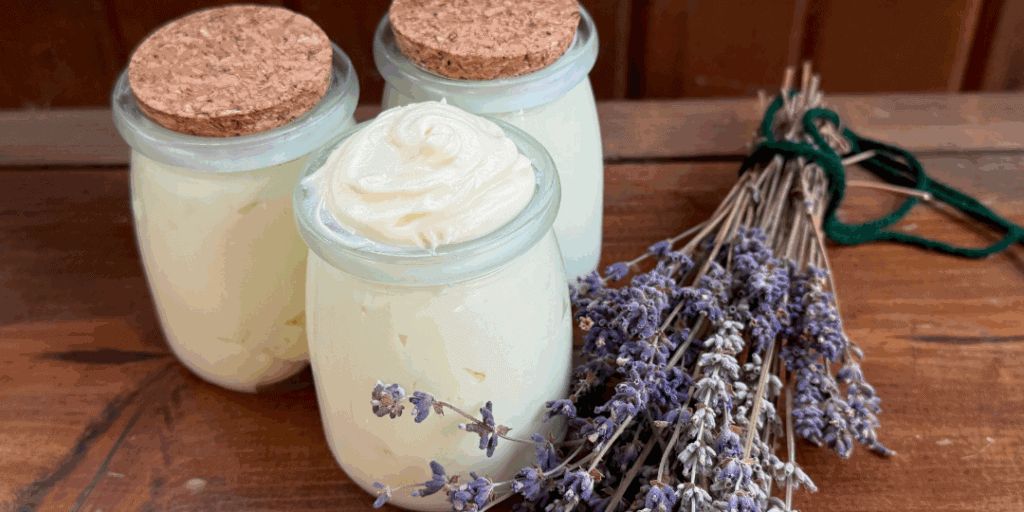
Understanding the Basics: Salves vs. Balms
While salves and balms are often used interchangeably, they have a few key differences. Both are oil-based herbal remedies used to soothe, protect, or heal the skin.
Salves typically have a softer texture and are made with a higher ratio of oil to beeswax, making them easy to spread over larger areas.
Balms are firmer, thanks to more beeswax or the addition of butters or rendered fats like tallow, and are ideal for targeted use or areas needing a more substantial barrier. For example, a tallow balm isn’t just for lips or sore muscles—it’s a deeply nourishing, full-body moisturizer that delivers intense hydration and skin barrier support.
Whether you’re reaching for a soft herbal salve or a rich, restorative balm, both are excellent options for natural skincare and everyday remedies.
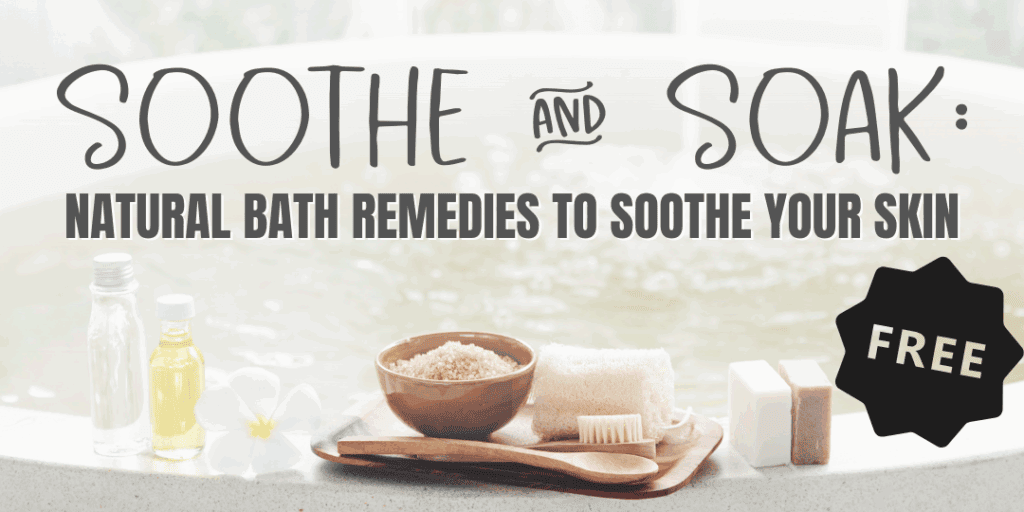
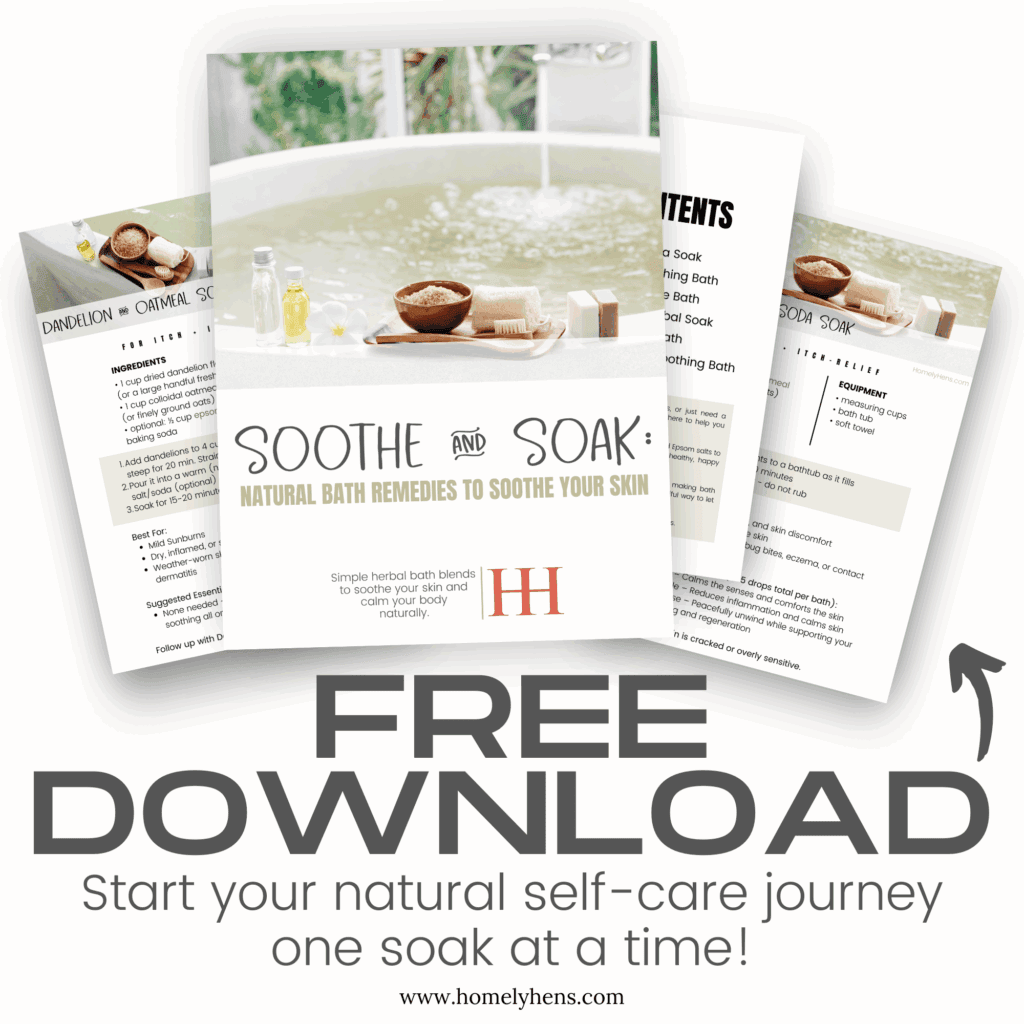

Oils, Butters, and Fats to Use in Balms
Some of the main ingredients in balms are oils, fats, and butters. We love to go with nontoxic and all-natural options that are nutritious and beneficial for our skin. Add an herb to infuse, and you have a powerhouse ingredient for your salves and balms.
Hard Butters and Fats
- Shea Butter– Deeply moisturizing and anti-inflammatory, ideal for dry, irritated, or sensitive skin.
- Cocoa Butter– Rich in antioxidants and helps form a protective barrier- great for healing and smoothing.
- Mango Butter– Light, non-greasy, and full of vitamins A & E, soothes sun-damaged or aging skin.
- Coconut Oil– Antibacterial and firming, works well in muscle rubs and protective balms.
- Lanolin– Locks in moisture and protects skin, often used in lip balms and diaper creams.
- Tallow (Beef/Deer Fat)– Nutrient-rich and skin-compatible, deeply restorative for dry, damaged, or mature skin.
Soft Oils
- Olive Oil- Gentle and nourishing, commonly used for infusing herbs and soothing minor skin issues.
- Sweet Almond Oil– Absorbs well and softens skin, perfect for everyday moisturizing salves.
- Jojoba Oil– Mimics skin’s natural oils, balances oily skin, and boosts absorption.
- Avocado Oil– Rich and fatty, great for eczema-prone or extra dry skin.
- Sunflower Oil– rich in vitamin E and linoleic acid, making it excellent for soothing, moisturizing, and repairing dry or sensitive skin.
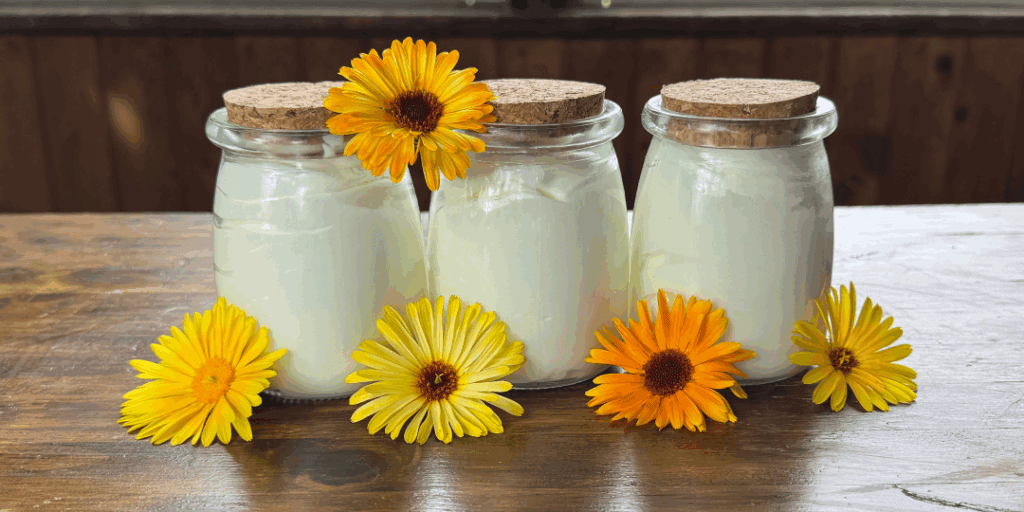
Popular Herbs to Use in Soothing Salves
While you don’t always have to include herbs or herbal-infused oils in your salves and balms, they do have a lot of added natural benefits! Adding essential oils is great, but there’s nothing better than using the actual herb or flower to get those nutrients. Take a look at our Herbal-Infused Oils page to learn more about herbs, oils, and infusions.
- Calendula– Known for its gentle healing properties, calendula is excellent for soothing irritated or inflamed skin, promoting wound healing, and reducing redness.
- Comfrey– Comfrey contains allantoin, which supports skin cell regeneration. It’s often used in salves for bruises, sprains, and minor wounds.
- Plantain– Plantain is a powerful herb for skin irritation, insect bites, and minor cuts due to its anti-inflammatory and antimicrobial effects.
- Arnica– Arnica is prized for its ability to reduce bruising, muscle soreness, and swelling. It’s typically used externally on sore or injured areas.
- Lavender– Lavender is soothing and calming, making it great for minor burns, insect bites, and promoting relaxation through aromatherapy.
- St. John’s Wort– This herb is known for its anti-inflammatory and nerve-soothing properties, often included in balms for nerve pain and skin irritations.
- Chamomile– Chamomile offers gentle anti-inflammatory and calming benefits, making it ideal for sensitive or inflamed skin.
- Echinacea– Often used to support skin healing and fight infection, echinacea helps with minor wounds and boosts the skin’s natural defenses.
- Peppermint– Peppermint adds a cooling sensation to balms and salves, which can help relieve muscle aches and provide a refreshing feel.
- Rosemary– Rosemary is stimulating and antimicrobial, often included in salves to improve circulation and support skin health.
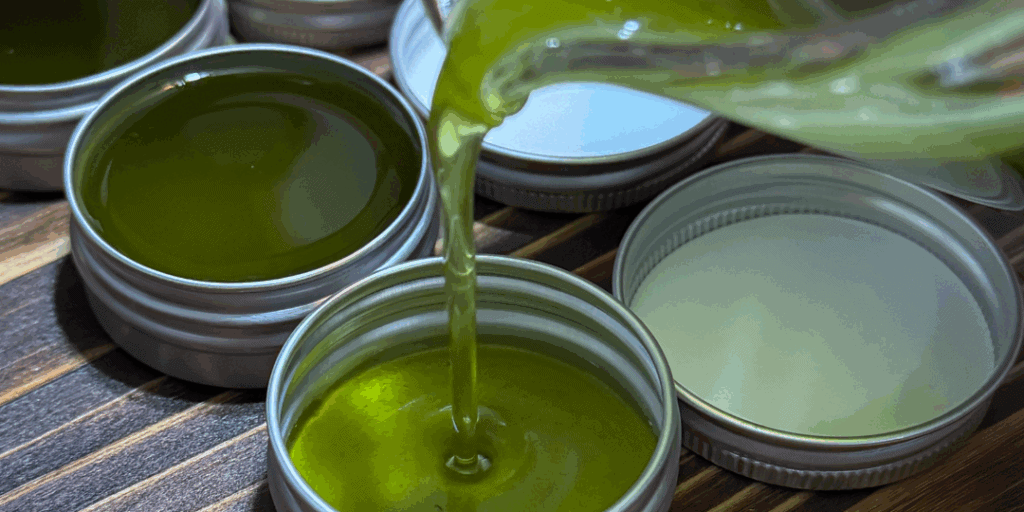
Tips for Customizing Your Salve Recipe
Making your own salve means you can tailor it perfectly to your needs! Here are some easy ways to customize a recipe:
- Add Essential Oils: Boost the scent and therapeutic benefits by adding a few drops of essential oils like lavender for calming, peppermint for cooling, or tea tree for its antimicrobial properties. Just be sure to use skin-safe amounts and always use an Essential Oil Calculator before adding them in.
- Switch Carrier Oils: Experiment with different carrier oils such as olive oil, jojoba, almond, or avocado oil to change the texture and add unique skin benefits. For richer salves, try adding nourishing fats like tallow or shea butter.
- Boost Healing Power: Include herbs with specific healing properties—like comfrey for tissue repair or calendula for soothing inflammation—to target particular skin issues.
- Adjust Beeswax Amount: Increase beeswax to make a firmer balm or reduce it for a softer, more spreadable salve, depending on your preference.
- Add Butters: Incorporate natural butters such as cocoa or mango butter for extra moisturizing power and a creamy texture.
Customizing lets you create the perfect blend for your skin type, desired use, and seasonal needs.
Discover Our Best DIY Salves and Balms
Explore our most-loved tutorials, recipes, and remedies for crafting your own herbal salves and tallow-based balms. Whether you’re soothing scrapes, nourishing dry skin, or learning the power of infused oils, these posts walk you through it, step by step.
Lemon Balm Lip Balm for Cold Sores – Soothe cold sores with this DIY balm.
Plantain Salve – Heal bites and scrapes with plantain salve.
Dandelion Salve – DIY salve for skin relief and healing.
Calendula Tallow Baby Balm Recipe – Gentle balm for baby’s delicate skin.
Whipped Lavender Tallow Balm – Rich, calming balm for sensitive skin.
Frankincense Whipped Tallow Face & Body Balm – A luxurious balm for soft, glowing skin.
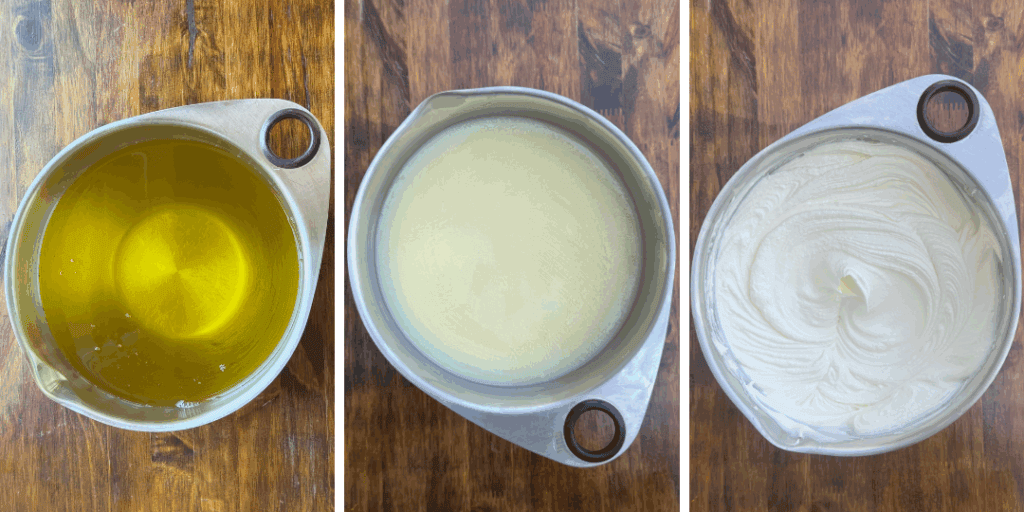
Essential Supplies for Making Herbal Salves and Balms
Before you get started, gather these basic supplies to keep your process smooth and stress-free.
- Jars for Storage– Containers with cork tops & cute labels for balms.
- Tins for Storage– Smaller tin containers for different-sized salves and balms.
- Small Silicone Spatulas – I love these silicone spatulas for mixing and scraping.
- Hand mixer for whipping the calendula tallow balm
- Wooden Spatulas– For scooping out balm without contaminating it.
- Labels – Label jars so you know exactly what’s in them.
- Funnels – Pour accurately using funnels and avoid the mess.
- Scale – Accurate measurements of oils and herbs by weight.
- Measuring Cups and Spoons – Measure by volume with tools.
Explore More Herbal Skincare Projects
Looking to expand your herbal apothecary? These natural DIYs are the perfect next steps. Whether you’re soothing irritated skin, building out your homestead remedies, or crafting gifts, these blog posts will help you build confidence and skill.
- Dandelion-Infused Oil – Easy herbal oil with skin-soothing benefits.
- Peony Bath Soak – Relaxing floral soak for soft, nourished skin.
- Dandelion Tallow Sugar Scrub – Exfoliate and hydrate with this herbal scrub.
- Lemon Balm-Infused Olive Oil – Calming oil for herbal balms and more.
- Plantain-Infused Oil – Herbal oil for salves and healing blends.
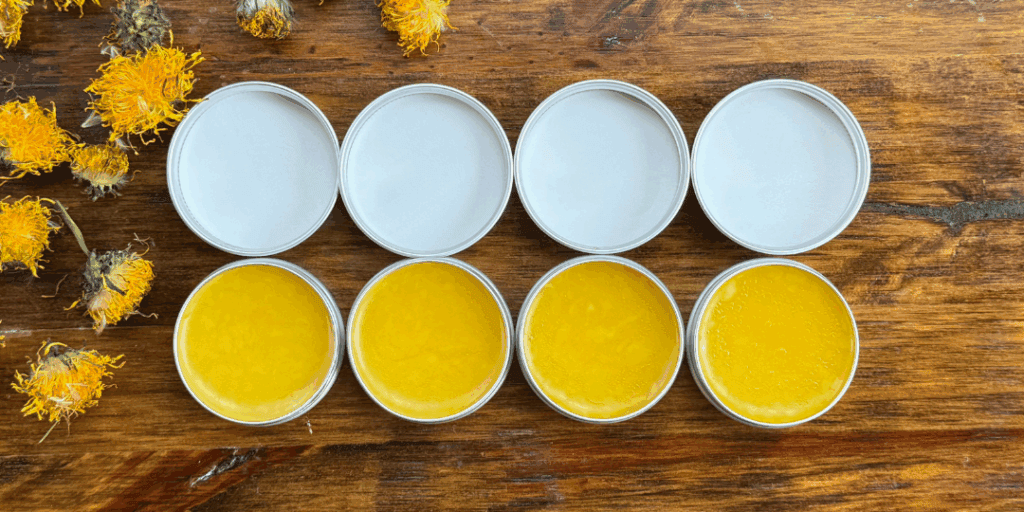
Frequently Asked Questions About Making Herbal Salves and Balms
Curious about shelf life, safety, or substitutions? This section covers the most common questions from beginners and experienced DIYers alike to help you get the most out of your herbal creations.
They’re very similar—both are semi-solid herbal preparations. Salves tend to be softer and easier to spread, while balms are firmer and often used for more targeted or protective applications like lip balm or muscle rubs.
Most herbal salves last 6–12 months when stored in a cool, dark place. Using dried herbs and clean containers can extend their shelf life.
Yes! Alternatives include candelilla wax (vegan), shea butter, or solid fats like tallow, though the texture may differ.
Popular options include calendula, plantain, comfrey, yarrow, lavender, and chamomile. Each has unique skin-soothing or anti-inflammatory benefits.
Yes—but you’ll need to follow local labeling, cosmetic regulations, and possibly obtain insurance or business licensing depending on your location.
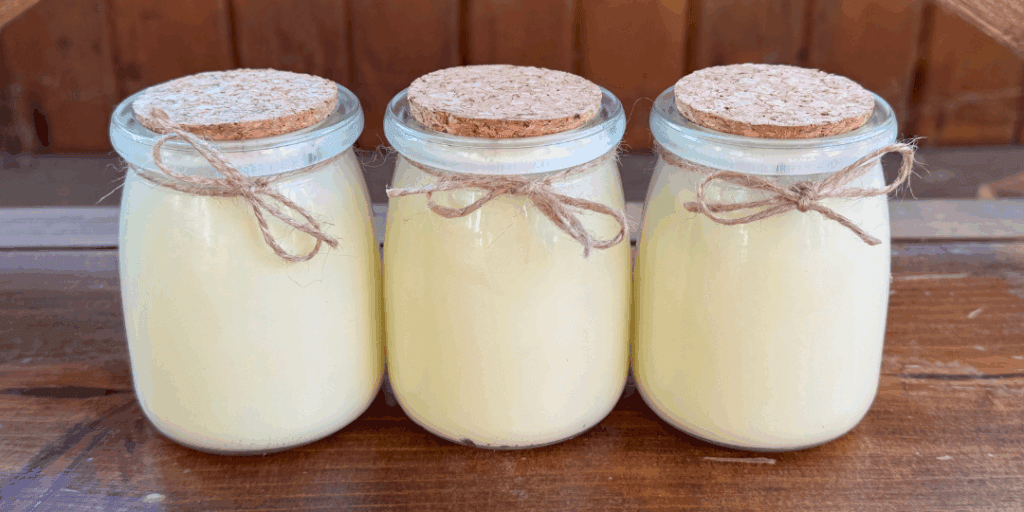
Ready to Start Crafting Your Own Herbal Remedies?
There’s something empowering about filling your home with natural, handmade products—especially when they actually work. Start with one salve, experiment with your favorite herbs, and watch your skills grow! Be sure to explore our collection of DIY recipes and remedies to keep learning and stocking your herbal toolkit.


